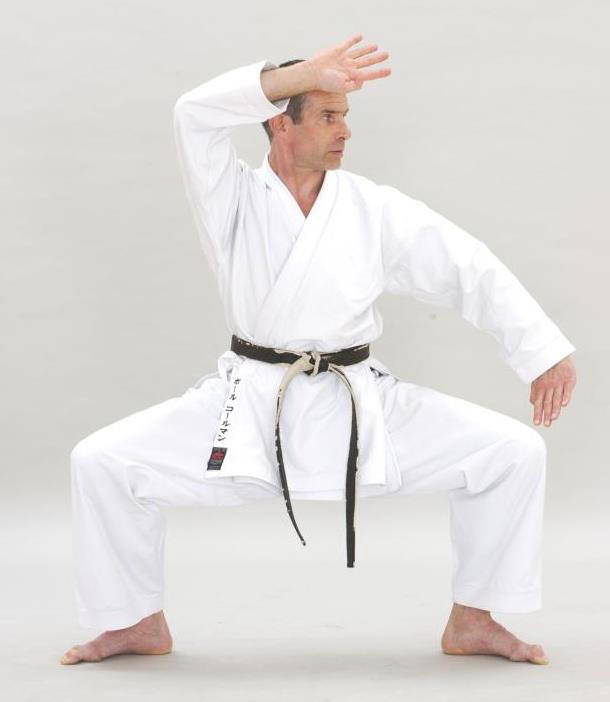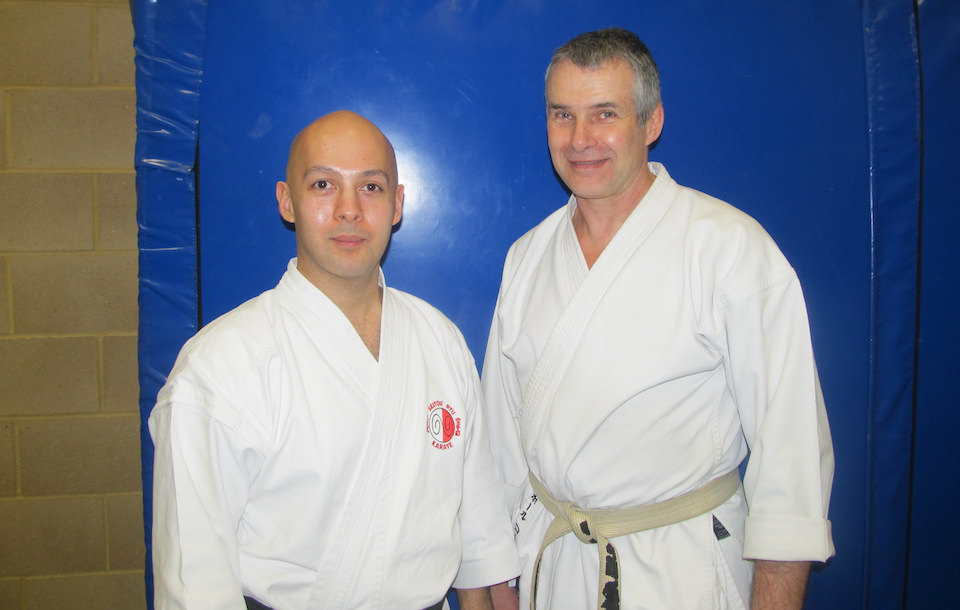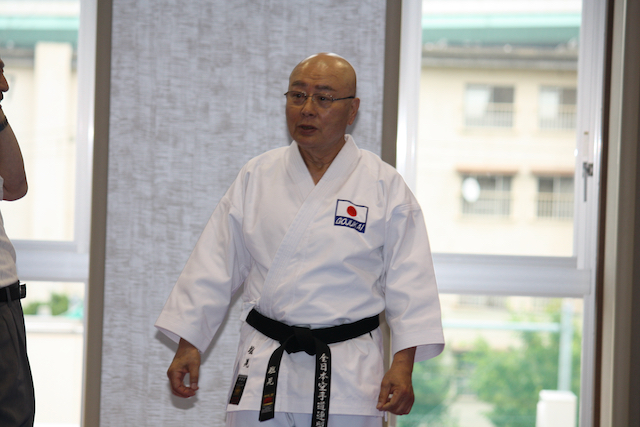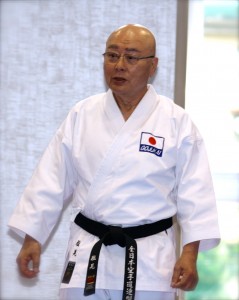
7th Dan JKF Goju Kai & Goju Ryu Karatedo Seiwakai
Head Instructor of Oxford Karate Academy
RHH: Hi Shihan, please can you tell our readers who you are and what you do?
PC: I am a Goju practitioner having began martial arts training in the 60s, with my start in Goju being 1974. I teach karate as a professional.
RHH: What is your current grade and title(s)?
PC: I have a 7th Dan in All Japan Karate-Do Seiwakai, I also have a 7th Dan In the Japan Karate Federation Goju Kai and a Kyoshi certification.
RHH: When did you start training, where and who with?
PC: I started Judo, boxing and karate in the 60s and took up Goju in October 1974 under James Rousseau, who was a 5th Dan representing the group under Morio Higaonna.
RHH: What got you started in the martial arts?
PC: Not sure really. I remember seeing Enter The Dragon and thought “WOW! I want to do some of that”
As a kid I had no big brothers and was bullied. I went to the boxing gym where the bullies trained and there was my chance to spar one on one without four of them ganging up on me.
RHH: Do/did you ever compete?
PC: Many times!
RHH: Any particular highlights during your competitive career?
PC: I have competed and officiated in various competitions including:-
• 1975 BKCC All styles, Belle Vue, Manchester Official
• 1980 Leopoldsburg Belgium Silver Team WUKO kumite
• 1981 IOGKF World Championships Okinawa Japan Silver Team WUKO kumite
• 1981 EKF Championships at Aston Villa Silver Team Kata
• 1982 Italia Coppa Internazionale Miyagi Chojun Italy Silver Team WUKO kumite
• 1982 All Styles Open Tournament Gold individual Kata
• 1982 B.K.K. Knockdown Crystal Palace Competitors medal (I got disqualified!)
• 1983 Campionato Europeo Karate Goju-Ryu Italy Bronze Team WUKO kumite
• 1984 Coupe Miyagi France Gold Team WUKO kumite
• 1984 All Styles Open Tournament Gold individual Kata
• 1989 Miyagi Chojun Festival San Diego California USA Gold individual Iri-Kumi
• 1990 Miyagi Chojun Festival San Diego California USA Gold individual Iri-Kumi
• 1990 Miyagi Chojun Festival San Diego California USA Silver Team Iri-Kumi
• 1991 Mid-West Karate Tournament Bronze Team Kata
• 1991 Mid-West Karate Tournament Gold Team WUKO kumite
• 1991 IOGKF World Championships Okinawa Japan Gold individual Iri-Kumi
• 1992 IOGKF, European Championships France. Silver Team Iri-Kumi
• 1992 IOGKF, European Championships France. Bronze individual Iri-Kumi
• 1997 EKGB National Children’s Championships Kata judge
• 1998 EKGB National Senior Championships Kata judge
• 1998 EKGB National Junior Championships Kata judge
• 1999 EKGB National Senior Championships Kata judge
I have entered numerous other events, too many to mention.
RHH: That’s an impressive record, what are your favourite techniques?
PC: Front leg left mawashi geri, as you may well know <laughs> and left jodan uri uchi.
(NB: On the first occasion that Shihan Paul and I got to spar, he knocked me out with his front mawashi geri)
RHH: Favourite kata?
PC: It fluctuates between Sepai and Kururunfa. Currently Kururunfa, but working mainly on Suparinpei, Sanchin and Tensho.
RHH: Would you say that you are a kata person or a kumite person?
PC: I am a karate person!
RHH: Who was your hero growing up?
PC: As a kid nobody, then Bruce Lee, Mohammed Ali and I liked Mike Tyson for his ferocity. My all time favourite boxer was “Marvellous” Marvin Hagler.
RHH: What’s the best thing about being a karate teacher?
PC: Seeing others develop. Kids that grow in confidence and adults too. Seeing people with a higher self-esteem.
RHH: And the worst?
PC: Seeing a student with SO much latent talent walk away from something they could be great in.
RHH: What’s your greatest achievement to date?
PC: I guess 7th Dan was a high, winning gold in California in 1989. But like you, being a daddy and seeing my children come into this world.
RHH: Who has influenced you the most in your karate?
PC: Many have influenced me. In the past I had James Rousseau, who made simple things interesting and difficult things seem easy, he was a good teacher. Then my time was divided between Len Sim and George Andrews. Len helped a lot with my kata and George made me a stronger, more determined character and developed my fighting instinct. Morio Higaonna was inspirational for his sheer tenacity and passion. Leo Lipinski has changed a lot of basics and given a new depth to them, by making them more applicable, thanks to his teachers Shuji Tasaki and Seiichi Fujiwara, who have given me enormous guidance this past 2 decades. I was fortunate enough to have technical help in kata by Akira Shiomi Hanshi, who is a genius at kata.
RHH: What are your plans for the future?
PC: To help others grow and develop and hope that I can still achieve a deeper understanding as a human being, a father and a karate teacher. Oh! And husband, or I get into trouble! <laughs>
RHH: Finally, any words of wisdom for our readers?
PC: Treat others as you would like to be treated. Be a person that you like from within and shine some light on others that you may be fortunate to share time with.
RHH: Thank you for your time Shihan. Domo arigato gozaimashita.
PC: Osu, Take care and bless you and your family.

.



